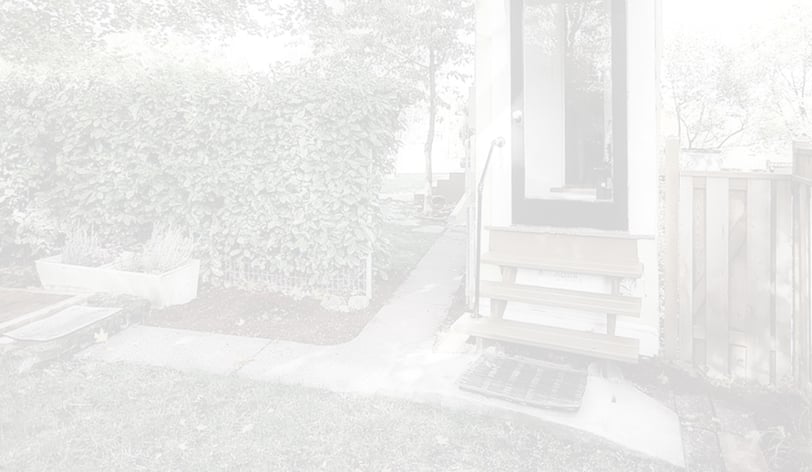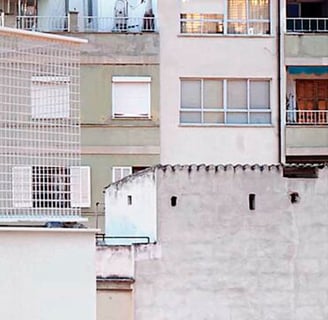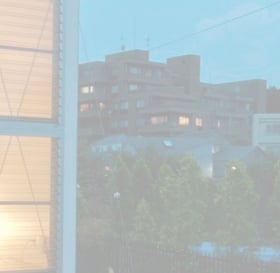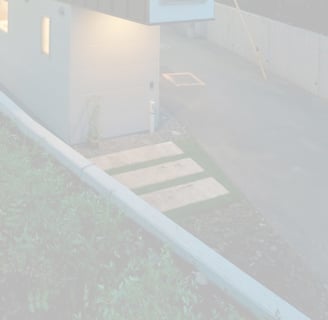NOTE: FOR THE OPTIMUM VIEWING EXPERIENCE WE RECOMMEND THAT YOU VIEW THIS SITE ON A DESKTOP
Home as a Boundary: Examining the Sociocultural Implications of Domestic Spaces
A. Karmakar
10/24/202410 min read


Homes and Hospitality Before
In conclusion, it is crucial to challenge our perceptions of the home by recognising its interconnectedness with both the inner and outside world. As we seek a deeper engagement with life, the community and the world outside, it is possible to enrich the lives of others and our own, creating a broader, more engaging definition of what 'home' and belonging means. Through philosophy, practice and some imagination we can encourage cultural advancement to honour the intricate tapestry of relationships within our environments and the ever changing society that exists beyond the artificial boundaries laid out for us.
Two protagonists supposedly coined the phrase 'Nuclear Family', social anthropologist Malinowski in the 1920's, and Murdock in 1949. Intriguingly Malinowski precedes the development of nuclear weapons whereas Murdoch proceeds the horrific and unnecessary events of Hiroshima and Nagasaki. This dichotomy however, does raise an interesting speculation. Was the creation of an industrialised 'satellitised' and socially fragmented family model engineered to create an emergent post-war army of state and industry dependent workers? Exploitation of workers in America, once the greatest industrial hub in the world, was wrought with the violence of strike-breakers, exploitation, poverty and wage-slavery all the way up to the 60's. Emily Pankhurst's feminist prospectus supposedly concerned with women's voting rights was influenced by British intelligence and in part motivated to atomise traditional families. This culminated in the displacement of women from home and family to the labour force thereby increasing tax revenue for the elite. World War I and II saw a titanic struggle between privatised central banking and an industrial based society with one of the few ballasts against it being collective bargaining, which despite prolonged and noble attempts by the proletariat to stand its ground has dwindled to a minority of powerless zero hour contract 'consumers' in the post Federal Reserve corporate free-for-all world of today.
Over the last century the extended family, and the traditional means to support it has been decimated leaving the post-nuclear, single, selfish, wealthy and disoriented contingent to curate an increasingly dysfunctional society. In it the elderly are disinherited by their offspring, oft because their life-work patterns are inimical to the needs of a rewarding family life. The solution and expectation therefore is for the elderly, the infirm to see out their time in privatised profit driven institutions.
The erosion of the extended family has proven a dehumanising burden to society. Maintaining a family has become an expensive luxury as hired help is needed to compensate for a limited social and family network. There is no one to look after the children whilst mom and dad work - children's nurseries and childminders dilute the benefits of two salaried parents. Care homes for the elderly eat away at family savings leading some into a cycle of debt. By engaging the state or private 'care' to manage things the elderly are prevented from transmitting their cumulative wisdom to the grandchildren - together with shrinking pensions and a thread-bare social safety net many die alone and in pain despite a long working life.
Upon a time, home and family were seen through an entirely different lens. The home was a civilising force, a conduit for establishing stature within the community, the place where families were raised and imbued with value and virtue. Myths and cultures spoke of hospitality, the extension of one's home and accomplishments as the gauge of a 'man's' spiritual credentials. Like one's lineage one could just as easily quote which 'house' or village one came from to verify one's standing.
Not so long ago, the narrative of the homesteader seeking to jettison the oppression of Europe, made the arduous journey across the Atlantic to realise their 'manifest destiny', to live simply and honestly in the promised land. The home in the desert garden land of Western America was wrought in symbols of nurturing, civilisation, preserving heritage, enterprise, productivity, freedom and safety. It was an inviolable space, a sacred proving ground, a peaceful haven of respite and renewal.
it's ironic, with all the myth-busting, science and sophistication of the modern world that we have become enslaved to extremes of utilitarianism. Another paradox: in many cases the word utilitarianism can be replaced with materialism but what a strange kind of materialism it is. A bit Cartesian really, a 'thing' that can be analysed to death and not yet fully understood, a world of possessions poised to gratify but never able to fulfil - these 'things' are supposedly artefacts of the brain and our material reality and thus owe their existence to a mythical power some call god.
In the end I guess each of us have to decide what a home is whether material, conceptual, both or neither - and how best to use it. There's a concept in cybernetics called "bringing forth worlds" coined by Maturana and Varela. It asks the question where does one's perception end and objective reality begin? This entanglement of notions probably alludes to the interconnectedness of all things that the current spate of dull-witted cyber-geeks have taken materially and materialistically. Thus Harrari and Kurzweil speak of 'the internet of all things' and 'the singularity'.
Understanding the Home as a Boundary
The home serves as a complex entity in our lives, embodying both a stronghold of comfort and security and a potential site of isolation. On one hand, it acts as a sanctuary for individuals, providing essential emotional and psychological support. The sense of safety derived from being in one's own domestic space fosters a conducive environment for personal growth and well-being. Within these walls, individuals often engage in self-reflection, cultivate relationships, and create lasting memories. This nurturing environment empowers individuals to recharge, allowing them to face external challenges.
However, the very characteristics that make a home a stronghold can also lead to a detrimental form of isolation. When individuals become overly reliant on their domestic spaces for fulfilment, they may unintentionally compartmentalise their lives, limiting their engagement with societal issues and outside influences. This insular perspective risks fostering a narrow worldview, where interactions with diverse cultures, opinions, and experiences are significantly diminished. Consequently, people may find themselves detached from the dynamics and the needs of their communities, leading to apathy towards critical social matters. The balance between utilising the home as a source of comfort and avoiding the pitfalls of isolation is crucial for fostering a well-rounded perspective.
Furthermore, societal changes, such as the increasing reliance on technology, exacerbate this duality. With more individuals working remotely and maintaining social interactions through digital means, the boundaries of home can blur, making it easier to remain within personal confines. Ultimately, while homes can encapsulate the essence of safety and personal fulfilment, it remains imperative to recognise the potential risks associated with isolation. Thus, being mindful of how domestic spaces shape personal experiences can lead to a purposeful engagement with the broader world.
Facets of the Home: Stronghold v Isolation
Primitivist Territorial Constructs:
The concept of home can be fundamentally understood as a primal territorial construct, deeply ingrained in human behaviour and sociocultural dynamics. Throughout history, humans have developed instinctual responses to establish and maintain boundaries around their living environments. This instinct for territoriality influences not only the physical spaces we inhabit but also conceptual relationships that spring from those spaces. Distinct separations in domestic settings, be they through walls or designated areas within a home compartmentalise various aspects of life influencing social interactions and individual actions.
Territorial constructs are rooted in the need for safety, privacy, ownership and identity. By creating defined boundaries, individuals delineate what is considered "theirs," which can provide a sense of security and belonging. This further allows individuals to cultivate their own identity within the context of their home. Families and communities often become intertwined with these territorial spaces, reinforcing norms and expectations surrounding interactions within and outside the home. In this way, the home acts as a microcosm for larger societal structures, where the dynamics of separation and compartmentalisation reflect broader social conventions.
However, the implications of such territorial constructs can be complex. While establishing boundaries can fulfil necessary psychological needs, they may also lead to perceptions of selfishness or exclusivity. The instinct to defend one’s space can inadvertently foster isolation or conflict, particularly in multicultural settings where diverse territorial constructs may clash. Balancing between the need for personal space and the desire for communal interconnection becomes essential for fostering healthy social environments. Understanding these dynamics sheds light on the intricate relationship between home, territory, and the sociocultural implications of our constructed reality from within those domestic spaces.


These boundaries create a space where personal narratives unfold, allowing individuals to curate their experiences while simultaneously defining who they are in relation to others.However, the boundaries of home also prompt critical questions concerning exclusion and separation. For instance, while a home can offer solace, it might simultaneously delineate between those who belong and those who do not. This duality illustrates that homes can create environments of intimacy, but they can also reinforce social stratification and disadvantage. Understanding home as a boundary necessitates a careful examination of both its protective qualities and its potential to isolate. As we explore this nuanced notion, it becomes evident that domestic spaces are not just physical structures; they are complex potentialities that engage with the myriad identities, relationships, and social expectations that shape our lives.
Boundaries associated with domestic spaces do more than protect; they shape identities. The very design and layout of a home often express cultural values, beliefs, and even the social status of its inhabitants. Simple elements such as rooms, furniture, and artwork can represent much more than aesthetic preferences; they become symbols of belonging and community.


The concept of home transcends mere physical structure; it functions as a boundary that delineates personal space while reflecting deeper sociocultural narratives. Across various cultures, homes are imbued with meaning, serving as a haven that fosters feelings of safety and intimacy. Historically, the interpretation of home has evolved, influenced by social dynamics, economic conditions, and individual experiences. In many societies, the home acts as a fortress, a psychological barrier against external threats, ensuring that those within its walls can experience a sense of security away from the uncertainties of the outside world.




separation & compartmentalisation




The traditional notion of home has long been perceived as a sanctuary, an insular refuge where individuals retreat from the external world. However, contemporary sociocultural dynamics compel us to rethink this perspective, emphasising the importance of engagement with our surroundings. The contemporary movements toward open living spaces and communal living are increasingly presenting home not merely as a physical structure, but as a dynamic relationship between the inside and outside. This shift challenges us to view our living environments through a broader lens that promotes inclusivity and mindfulness regarding our communities.
Open living spaces serve as a catalyst for social interaction, blurring the boundaries that separate individual households. By fostering connections among neighbours and communities, these designs invite residents to engage with one another, thus redefining the very fabric of what constitutes a home. The incorporation of shared public areas within residential developments exemplifies this trend, encouraging a sense of belonging that transcends the four walls of private residences. This new understanding of 'home' infers that individuals are not isolated entities, but rather integral parts of a larger social mosaic.
Moreover, the emergence of urban gardens and community-led initiatives further elucidates the relationship between domestic spaces and the external environment. As citizens become increasingly involved in their communities, the concept of home expands to include these communal interactions, actively breaking down the barriers between personal and public spheres. By embracing this collaborative spirit, we invite a diversity of perspectives and foster a culture of inclusivity that enriches our understanding of what the home is
The Concept of Home: Bridging the Gap
Between Inside and Outside










Music by: CABANE feat. bonnie 'prince' billy & bostgehio: 'Take me Home Part II'
Music by: Pink Floyd 'Is There Anybody Out There', Source: https://www.youtube.com/watch?v=jtBLZP_RGeQ
the Cult of Self
Image courtesy of Nowaki24 'Bing August0087'-Source: www.deviantart.com
'Seattle Montlake Spite House'-Source: https://www.architecturendesign.net/no-lot-too-challenging-13-ingenious-odd-shaped-houses/
'RipollTizon Estudio de Arquitectura: https://www.architecturendesign.net/no-lot-too-challenging-13-ingenious-odd-shaped-houses/
'OH House Tokyo' by Atelier Tokuto - Source: https://www.architecturendesign.net/no-lot-too-challenging-13-ingenious-odd-shaped-houses/
'Cabris House', by Cadaval & Sola Morales -Source: https://www.architecturendesign.net/no-lot-too-challenging-13-ingenious-odd-shaped-houses/






Being a simple guy myself I prefer to see the outer world as an extension of my inner world. I organise my home to mirror that projection - it's a creative space, where, like 'Jonesy' the cat in 'Alien' 1, I sleep and dream; a nurturing and protective world that borrows equally from classical myth and breakthrough ideas and serves as a place for everyday practical maintenance. With this representation (plus a few anomalies) I speak of the world I hope for, all the time realising that if I don't create it there there's little chance of creating it outside those 'material' boundaries - does that make sense?
Dream
Crafting homes for living, growing, and thriving.
Design
Safety
info@pearlblisshomes.com
Skype: live:zro_46
© 2024. All rights reserved.
